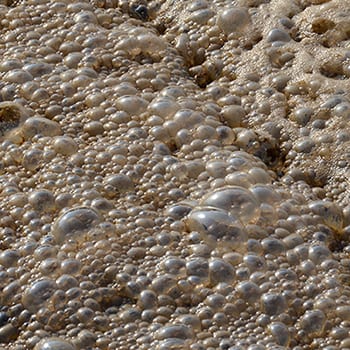The Application of Defoamers in the Pulp and Paper Industry
Discover the Top Advantages of Utilizing Defoamers in Industrial Processes
The usage of defoamers in industrial processes offers an array of engaging benefits that can enhance functional performance and item high quality. By efficiently controlling foam manufacturing, these agents not only maximize product flow but also add to substantial expense reductions and improved sustainability. The effects of taking on defoamers might be much more extensive than originally viewed.
Enhanced Refine Effectiveness
Optimizing commercial processes often entails attending to foaming concerns, which can impede functional effectiveness. Foam formation can disrupt the proper performance of devices, decrease the effective application of sources, and complicate the surveillance of vital parameters. By applying defoamers, markets can properly reduce these concerns, causing streamlined procedures and boosted productivity.
Defoamers job by destabilizing the foam structure, permitting fast collapse and substantial reduction in foam quantity. This activity not only improves the circulation of materials with tools, such as reactors, pipelines, and mixers, but likewise lessens disturbances brought on by foam overflow. Devices downtime is lowered, enabling for an extra reliable and continual production process.
Furthermore, making use of defoamers can result in decreased power intake. With much less foam to take care of, pumps and compressors can operate much more efficiently, resulting in lower operational prices and a total renovation in procedure throughput. Eventually, the calculated usage of defoamers not only addresses instant foaming challenges yet additionally adds to a much more efficient industrial environment, promoting a competitive benefit in a requiring market.
Improved Product Quality
The assimilation of defoamers in commercial processes plays an important role in enhancing item high quality. By effectively regulating foam development, defoamers contribute to the uniformity and uniformity of final items. Extreme foam can lead to oygenation, which negatively influences the structure and stability of solutions, particularly in sectors such as food and coatings, drugs, and drinks.

Additionally, defoamers facilitate much better mixing and diffusion of active ingredients, leading to homogeneity in formulas. This is vital in applications where specific active ingredient ratios are crucial for efficiency and security. Furthermore, the elimination of foam can lower the danger of contamination throughout production, more securing product stability.
Inevitably, by enhancing item quality, defoamers not just enhance customer satisfaction yet also strengthen brand reputation. Their function in keeping top notch standards highlights their relevance in modern commercial processes.
Price Reduction Benefits
Applying defoamers in commercial processes can cause substantial cost reduction advantages. By effectively managing foam development, defoamers decrease item loss during manufacturing, thus enhancing product usage. This reduction in waste equates straight right into reduced basic material costs, enhancing general operational performance.
Moreover, the use of defoamers can reduce energy usage. Extreme foam can impede devices efficiency, leading to increased energy requirements to maintain production levels. By mitigating foam, defoamers facilitate smoother operations, allowing machinery to run much more effectively and minimizing energy expenditures.

Furthermore, defoamers can shorten handling times. Foam can produce added obstacles that extend production cycles. By utilizing defoamers, sectors can enhance their processes, leading to faster turn-around times Home Page and boosted throughput. This performance not only accelerates manufacturing however also permits business to fulfill market needs a lot more swiftly.

Environmental Influence Reduction
In commercial processes, the use of defoamers plays a crucial duty in mitigating environmental impacts related to foam generation. Foam can cause substantial functional inefficiencies, causing boosted emissions and waste generation. By properly managing foam, defoamers help preserve process effectiveness, thus lowering the general environmental impact of operations.
Additionally, excessive foam can overflow control systems, resulting in spills that might contaminate dirt and water resources. Defoamers assist minimize this danger by ensuring that lathering does not go beyond recommended restrictions, promoting compliance with ecological regulations. This aggressive method not just safeguards communities however additionally enhances the sustainability of commercial techniques.
Additionally, making use of defoamers can decrease power usage in numerous processes. defoamers. Minimizing foam development diminishes the need for extra energy-intensive actions, such as increased anxiety or pumping, which might or else be required to handle foam. The fostering of defoamers straightens with more comprehensive sustainability objectives by advertising power performance while minimizing the carbon footprint of industrial activities.
Eventually, integrating defoamers into industrial operations is a tactical step see post that supports environmental stewardship and responsible resource administration.
Adaptability Across Industries
Across various industries, defoamers show impressive convenience, adjusting to the certain requirements of varied applications. In the click food and beverage industry, for example, defoamers are essential to maintaining item top quality by stopping foam formation during handling, which can impact structure and flavor. Similarly, in the pharmaceutical sector, defoamers make sure the security of formulas, enhancing item effectiveness and consistency.
In the chemical manufacturing world, defoamers help with smoother procedures by lessening foam in response vessels, thus boosting yield and reducing downtime. The paper and pulp market relies on defoamers to improve the efficiency of pulp handling and paper production, making sure ideal product stability. Additionally, in wastewater treatment centers, defoamers play an important duty in controlling foam throughout aeration processes, bring about enhanced treatment results.
The versatility of defoamers reaches the oil and gas sector, where they assist in taking care of foam in drilling fluids and manufacturing procedures. By tailoring formulas to meet certain sector requirements, defoamers offer as indispensable tools that improve functional efficiency, product quality, and total procedure efficiency across a wide variety of sectors. Their flexibility emphasizes their worth in modern-day industrial applications.
Final Thought
Finally, the application of defoamers in commercial processes provides various advantages, consisting of improved performance, boosted product high quality, significant cost reductions, and favorable environmental impacts. Their ability to properly regulate foam formation contributes to operational connection and resource optimization. The versatility of defoamers throughout diverse sectors underscores their critical function in promoting sustainable techniques and earnings. The integration of defoamers represents a calculated method to resolving challenges connected with foam management in different manufacturing atmospheres.
Eventually, the critical use of defoamers not just addresses prompt frothing challenges but also contributes to a much more effective commercial ecological community, cultivating an affordable benefit in a demanding market.
In industrial processes, the use of defoamers plays a vital duty in mitigating ecological effects connected with foam generation. By successfully regulating foam, defoamers assist preserve process effectiveness, thus decreasing the general environmental footprint of procedures.
In addition, in wastewater therapy facilities, defoamers play an important duty in regulating foam throughout aeration processes, leading to improved therapy results.
